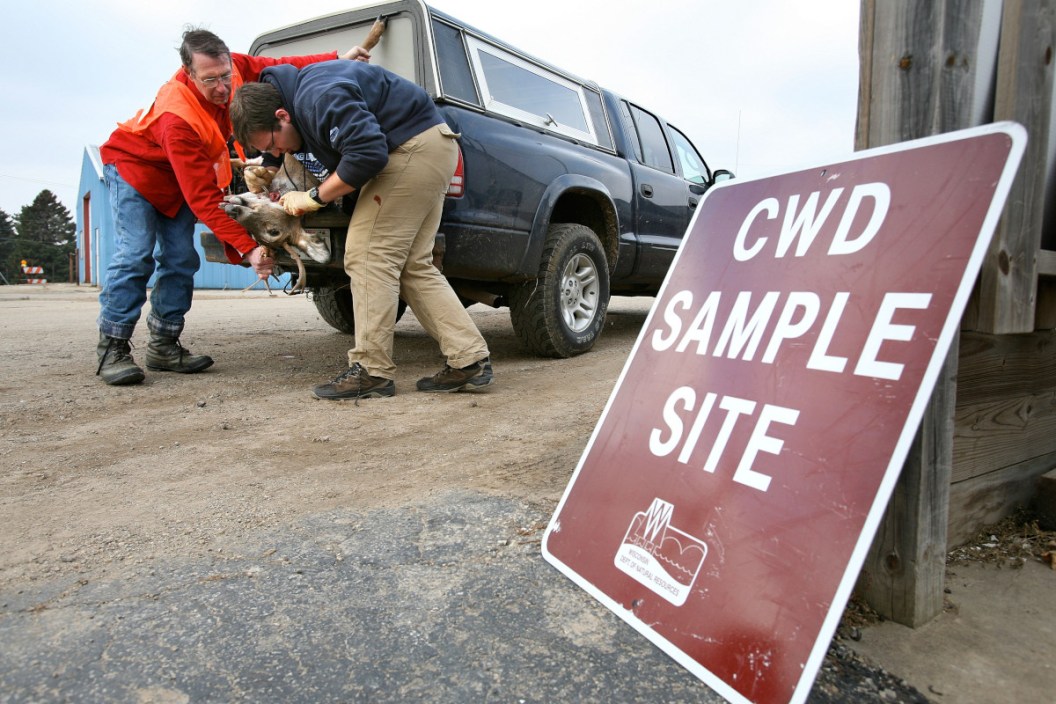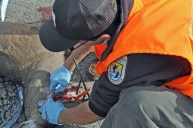Every year we hear more and more about chronic wasting disease and how it is affecting the whitetail population. For those who don't know, CWD is a highly contagious neurological disease that hangs out in the brain, spinal cord, and lymph nodes of cervids, aka: members of the deer family. It is spread easily in free-ranging deer either through direct contact with other animals or through urine or feces and attacks their nervous system, eventually killing them. It is obviously terrible for whitetail but it is also causing problems for hunters. If things keep going the way they are, hunting seasons in every state in the continental U.S. may soon be affected, as well as many Canadian provinces.
Because of CWD, hunters must change the way they do things in the areas where CWD has been observed. Even hunters in mostly non affected areas like the southeast are forced to take plenty of precautions with their harvested deer to make sure problems in surrounding states don't spread to their area. CWD is also the number one concern for every state wildlife agency, and some of their policies can be aggravating for hunters. Let's look at how the modern American hunter is dealing with CWD.
Concerns with venison
Some hunters are also very concerned about eating a deer that potentially has CWD. Although there have been zero documented cases of CWD being transferred by a whitetail to a human, there are precautions every hunter can take. Still, some hunters are taking zero chances.
CWD is scary mostly because it's a brain infection. Although it is also carried in the spinal cord of the animal. A lot of hunters try to use every part of the deer that they can. However, with the current CWD climate, more hunters are opting to not take the cuts of meat near the spine.
My grandfather used to take the whole neck and make a roast out of it, but you don't see that happening as often nowadays. Most of the hunters who do still do it are old-timers still stuck in their ways. I am even careful when cutting out the backstraps. I (and many other hunters) try my best to avoid any piece of meat that contacts spinal fluid. It goes without saying, but don't touch the brain either.
The use of Bait Piles
Baiting has always been a hot topic in hunting. It just became legal in my home state of Georgia a few years ago. We're not here to debate the ethics of using it not. However, there's no denying that all the research says that bait piles aid in the spread of CWD. It's believed when deer are bunched together on a pile, it's easier to spread the prions through salivation, or nose-to-nose contact between animals. So, even where it is still legal, some hunters are choosing not to use bait.
Even if a deer is alone on a pile, it's not necessarily safe. Mostly because there is a good chance they could encounter saliva left by another deer. Think of it this way: imagine eating off of one big plate with 20 strangers, wouldn't you feel gross? It is not quite as serious as that, but bait piles do aid in the spread of CWD, and it is good to not use them.
Fewer Out of State Hunters
A big thing with CWD is the transportation of deer carcasses over state lines. The regulations around transportation out of CWD zones make it very tedious for hunters, especially if you want to do some taxidermy with your harvest. I think these regulations are warranted, and it will certainly keep the spread more controlled, but tedious nonetheless.
Here are the regulations you need to abide by to transport a whitetail carcass out of a CWD zone:
- You must skin the animal AND debone the meat. Quartering the deer is no longer acceptable, every single bone must be removed.
- Antlers are to be sawed off. If you want to mount a deer with a cape and need the skull cap, you must thoroughly clean the skull plate and remove any meat that may be left on the cape.
- If you want a European mount, you must remove the skull and completely clean the skull cavity. Some states even require you to clean the teeth. I hope you didn't forget your toothpaste.
These specific rules came from Tennessee in 2017, but many other states like Michigan, Wisconsin, Illinois, Wyoming, and Kansas have variations similar to these. As a hunter that often hunts out of state, it would honestly be so much easier to avoid states that require this. It's just a shame that some of the best states for our favorite big game animal are also some of the worst for the disease.
The overall effect of hunters avoiding states like this is that their DNR's will make less revenue, and therefore have even less money to fight the spread of CWD. So while these regulations help stop the spread, they also make the DNR weaker in a way.
State wildlife agencies get most of their revenue from taxes and license fees from outdoorsmen in its state. The federal government gives their state wildlife agency funding which it collects in the form of added taxes on outdoor equipment from that state's citizens. If we really want to see a change, the federal government needs to provide additional funding to states that are struggling with CWD.
The effects on Hunter Recruitment
Another effect of CWD is less hunter recruitment. When most of us started hunting, CWD was not that big of a problem. Hunting has always been an easy going and relaxing thing for me, but I could see how all of the CWD "hype" and added regulations could deter new adult hunters.
For the youth being brought up by hunters, their teachers may be a little reluctant to get them started in the whitetail world if they live in a state with widespread CWD. There are a ton of factors that come into play, but the more hurdles you give prospective new hunters, the less new hunters you are going to get. In the coming decades, we will have fewer hunters and less revenue for our wildlife agencies which is certainly not a good thing for our whitetail population.
Some hunters may get annoyed with all the CWD testing and other mandates brought on by this disease to some states. However, that's an unfortunate part of hunting in North America today. If we want to preserve the populations of white-tailed deer, mule deer, and other big game, we need to follow the science on what's best for our herds.
NEXT: NO, CWD IS NOT GOING TO BRING ON THE "ZOMBIE DEER APOCALYPSE"




